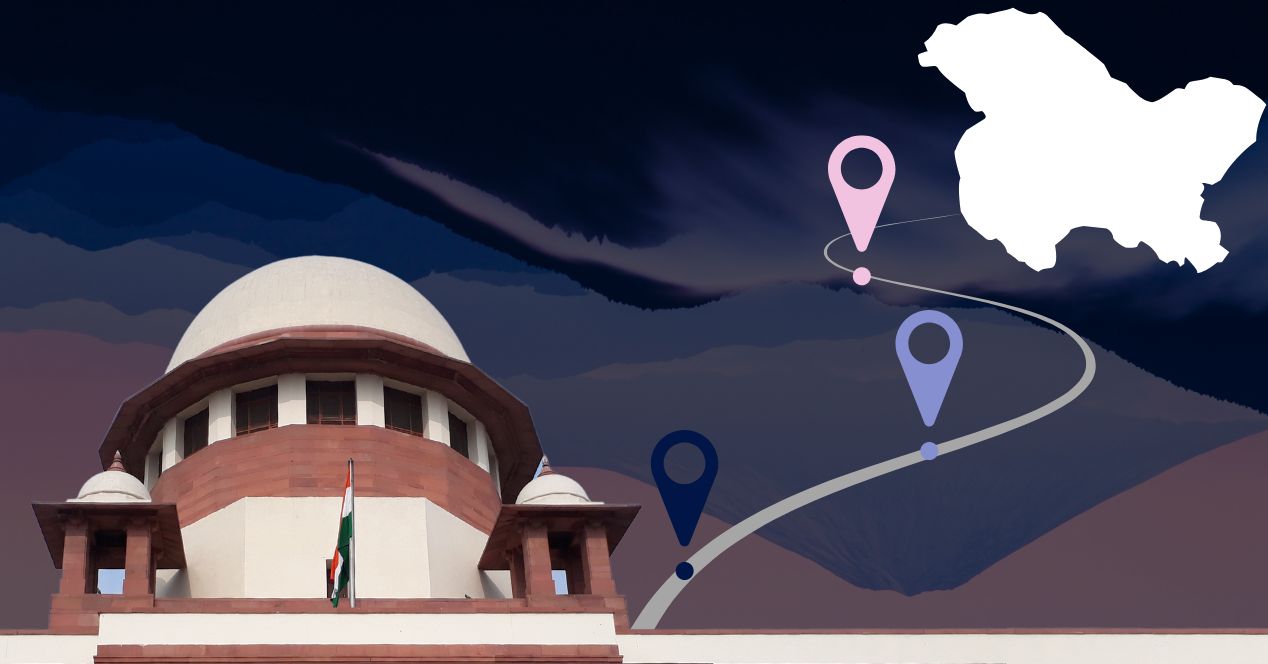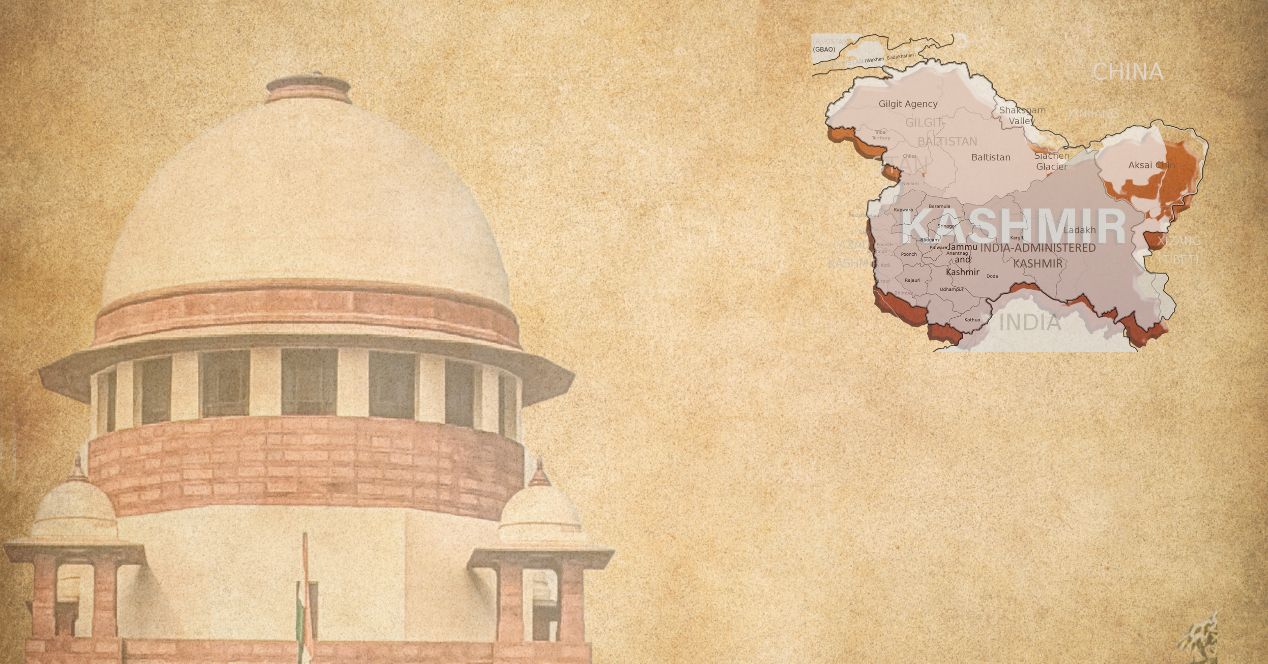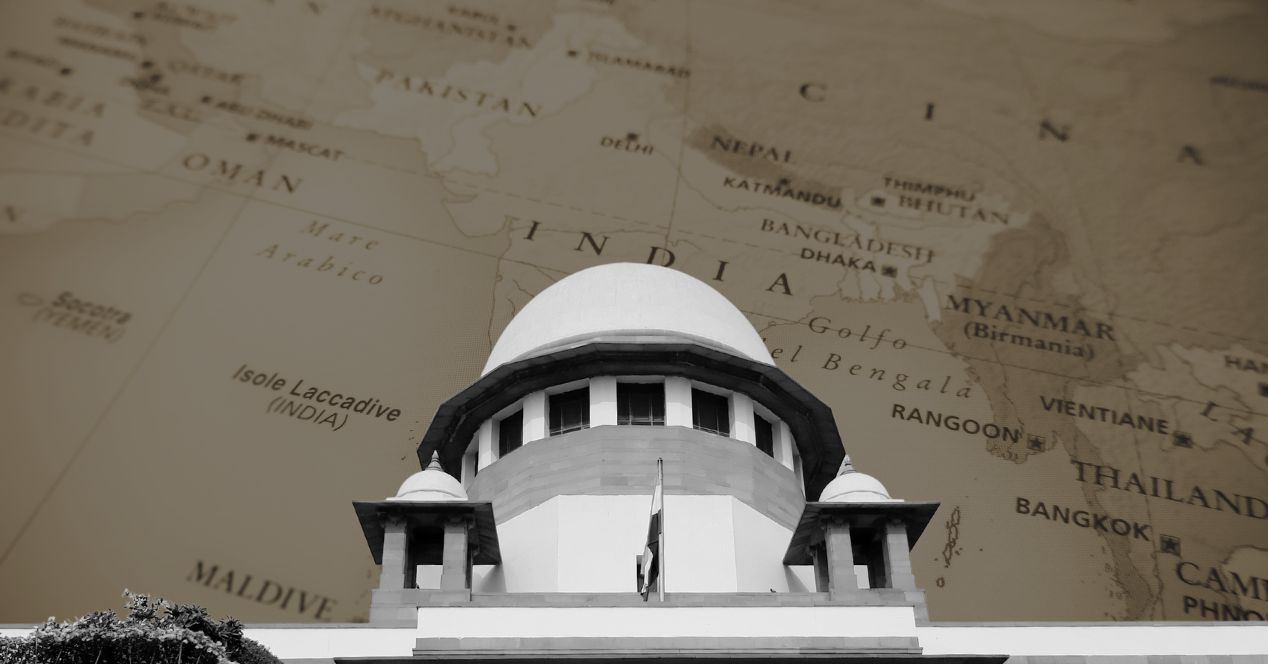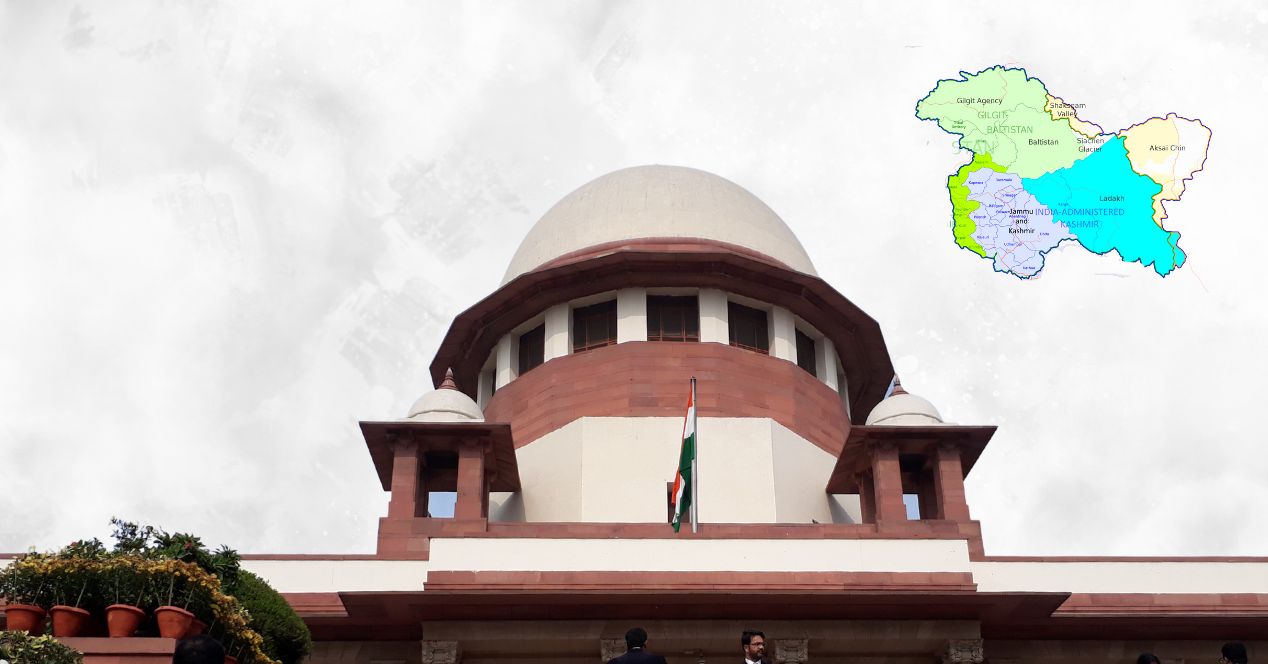Analysis
A Broken Pact: An Excerpt from ‘A Dismantled State’
The terms of J&K’s Instrument of Accession have been compromised by the abrogation of Article 370, Anuradha Bhasin argues in her book.
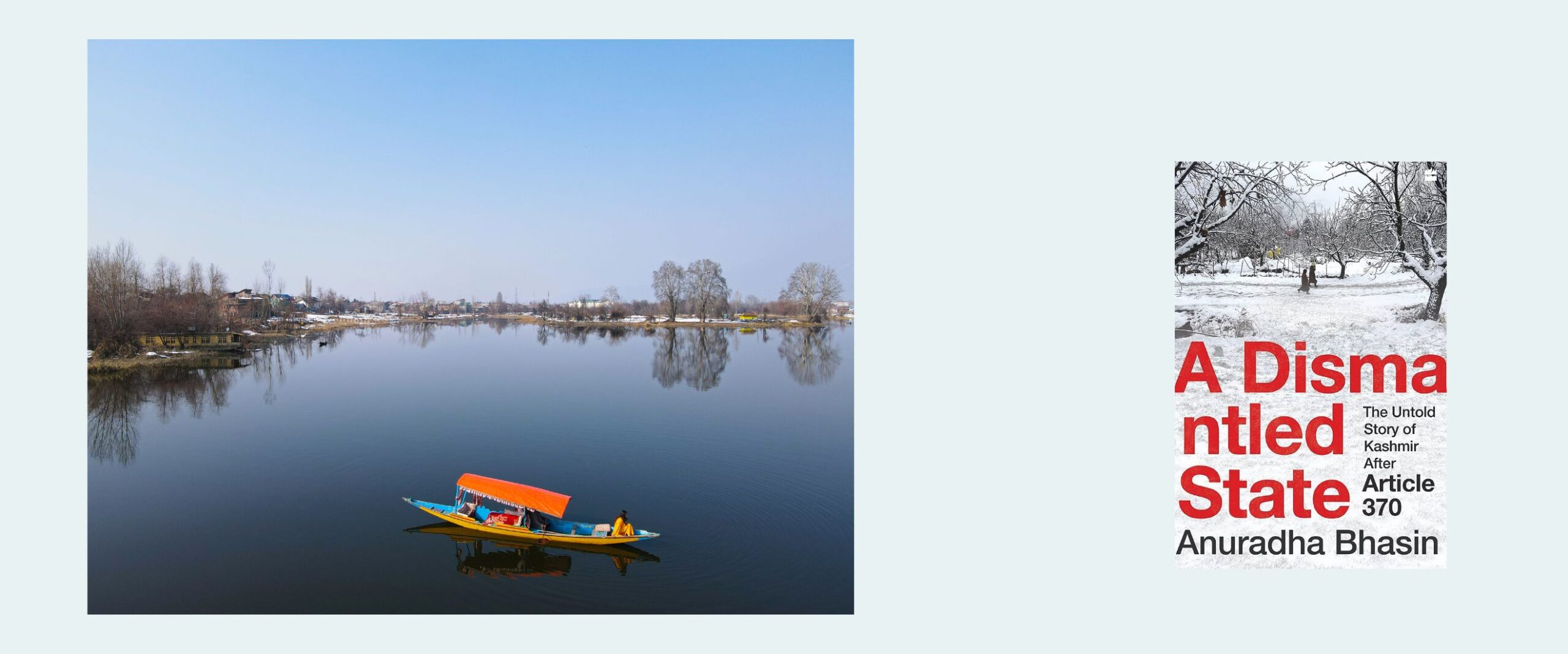
ARTICLE 370 revoked, Jammu and Kashmir divided into two union territories, Union Home Minister Amit Shah announced in the Rajya Sabha on 5 August 2019 while putting the Jammu and Kashmir Reorganisation Bill, 2019, to vote which was passed with a majority….
Sitting in Jammu, the silence around me was broken by low-key celebrations of the BJP and supporters of revocation of Article 370. But noises on social media were louder. ‘Now the Kashmiris have been taught a lesson’; ‘I will buy land by the Dal Lake’; ‘Kashmiris could buy land in Jammu, but we couldn’t in Kashmir’. Such comments came from friends and acquaintances who were permanent residents of Jammu and Kashmir even though there had never been a legal bar on them for possessing landholdings in the Valley.…
Uneasy and unable to put my mind to work, I sought solace in the company of Krishan Dev Sethi. Sethi Saheb, as he is popularly called, is a veteran crusader of the ‘Quit Kashmir’ movement, a communist leader, former legislator and a man who had played a role in shaping the history and politics of Jammu and Kashmir. On that day, he was the only surviving member of the J&K Constituent Assembly that had drafted the constitution of the state, but which was now rendered meaningless. He was a living legend, an active participant of the history of the state. He had played a key role in pushing through J&K’s crucial land reforms that gave land to the tiller, the gains of which, he feared, could now be reversed….
I couldn’t have met a sadder man that day. His voice choked, as he said ‘Everything’s finished … they have destroyed everything … my life’s work is worthless … I wasted my life – went to jail, went underground, fought the powerful oppressors before and after 1947.’
…All these years, he had been active – speaking at gatherings, attending meetings of the Communist Party and bringing out an Urdu weekly Jaddojehed (meaning ‘Struggle’), which was critical of successive Central and state governments. His weekly had a small but serious readership, and he wrote with unflinching commitment. Suddenly, all of it seemed meaningless to him on 5 August. ‘From today, I stop printing my weekly,’ he told me. Jaddojehad came to an abrupt end, and he remained confined to his house till he passed away on 28 January 2021.
…In 1949, Sheikh Abdullah had sent a small J&K delegation, including Krishen Dev Sethi, for negotiations on the future relations between India and Kashmir with India’s first Prime Minister, Jawaharlal Nehru, and home minister, Sardar Vallabhbhai Patel. The Central government was aware that the special status of Jammu and Kashmir had to be recognized for the region to be part of India’s democratic future. There were five points that the J&K delegation mooted: land reforms, debt waiver, ‘no’ to monarchy, separate currency and a flag. ‘They [Nehru and Patel] didn’t agree on the currency, but we managed to get their consent on the other four,’ Sethi said, ‘Thereafter, it was important that the flag represent our vision of opposing exploitative structures and standing with the working class,’ he added, his memory crystal clear.
That is how the flag came into being—a white plough on a red background with three white vertical lines denoting the three regions of the state—Jammu, Kashmir and Ladakh. After the revocation of Article 370, the flag lost its relevance. It was lowered for the last time on 25 August 2019. Before that, it was mandatory to hoist the state flag along with the Indian national tricolour.
…What was it that brought people like Sethi Saheb on the edge on 5 August 2019? He was one of the people who had drafted the constitution of J&K, constructed the edifices of the state and shaped its basic architecture, brick by brick. It must have been horrifying to find that structure being razed right in front of him, seven decades later. The irony that his son, Achal Sethi, as J&K’s law secretary, was signing all the relevant papers, reversing everything that he had painstakingly built, couldn’t have been any less traumatic.
…Article 370 was a constitutional recognition of the conditions mentioned in the Instrument of Accession and reflected the contractual rights and obligations of the two parties.
In Clause 5 of the Instrument of Accession, Hari Singh said that the terms of ‘my Instrument of Accession cannot be varied by any amendment of the Act or of The Indian Independence Act unless such amendment is accepted by me by an Instrument supplementary to this Instrument’. In Clause 7 of the Instrument of Accession he said: ‘Nothing in this Instrument shall be deemed to commit me in any way to acceptance of any future Constitution of India or to fetter my discretion to enter into arrangements with the Government of India under any such future Constitution.’
Legal luminary A.G. Noorani notes that accession of Jammu and Kashmir is unique as it was accompanied by a letter which the Maharaja wrote to Lord Mountbatten. Significantly, the letter states that ‘Jammu and Kashmir is contiguous to both the dominions. It has vital economic and cultural links with both of them.’ It also points out its international strategic significance with proximity to the Soviet republic and China. The Maharaja mentioned that ‘under the standstill agreement, the Pakistan government was operating Posts and Telegraph system in the state’ and that ‘Pakistan had tried to put pressure on the state to accede, culminating in the communal tribal raids’. It added: ‘With the conditions obtaining at present in my state and the great emergency of the situation as it exists, I have no option but to ask for help from the Indian dominion. Naturally they cannot send the help asked for by me without my state acceding to the dominion of India. I have accordingly decided to do so, and I attach the Instrument of Accession for acceptance by your government; the other alternative is to leave my state and my people to free booters.’
In his reply on 27 October 1947, Lord Mountbatten responded: ‘It is my government’s wish that as soon as law and order have been restored in Kashmir and her soil cleared of the invaders, the question of the state’s accession should be settled by a reference to the people.’
Clearly, the compact with India through the Instrument of Accession had been made on the condition that the question of the state’s accession would be settled by a reference to the people. The accession thus was not permanent and irrevocable. It had to be settled by a referendum which was principally agreed to by the Indian government before and after the dispute went to the United Nations. New Delhi took the case to the UN resulting in a UN resolution to resolve the dispute through a referendum after phased demilitarization from both sides, beginning with withdrawal of Pakistani forces from the state. Both India and Pakistan occupy the two parts of J&K and have kept the political dispute alive, giving rise to insurgency since 1989.
It was on the basis of this conditional accession that on 17 October 1949, Article 370 was included in India’s Constitution by the Constituent Assembly, after it was moved for consideration as Article 306A. In defense of the special status for Jammu and Kashmir, N. Gopalaswamy Ayyangar had pointed out, during the Indian Constituent Assembly proceedings, that the condition of the state was ‘not ripe for full integration’ and reasoned that a significant degree of autonomy had to be given to J&K within the constitutional structure of the Indian Union….
Ayyangar affirmed that the Indian government had agreed that a constituent assembly, as representative of the people of Jammu and Kashmir, will determine the constitution of Jammu and Kashmir and decide on the ‘sphere of union jurisdiction over the state’. Till a constituent assembly comes into being, only an interim arrangement is possible, he said, emphasizing that this arrangement ‘could not at once be brought into line with the arrangements existing in the case of other states’…
Sitting with Krishan Dev Sethi that day, I asked him about the Constituent Assembly debates on Article 370 that he was witness to and his own role in framing of the J&K constitution. Sethi was part of the twelve-member delegation sent by Sheikh Abdullah to Delhi to witness the debate. He recalled that Article 370 (then Article 306A) was passed almost unanimously (with only one dissenter). Interestingly, the dissenting vote was cast not by the Hindu Mahasabha ideologue, Syama Prasad Mookerjee, but Maulana Hasrat Mohani, one of the founding members of the Communist Party of India. His objection was not to the grant of special status to Kashmir, but he sought a similar model of autonomy for all other states of India in pursuance of his concept of federalism.
‘In the J&K Constituent Assembly, the members had to take a call on Article 370 – accept it or reject it. We accepted it and that automatically made Article 370 irrevocable,’ Sethi said….
…‘Our second motive was to bring in laws that would undo the injustices of the past. Land reforms, signaling an abrupt end to feudalism by offering land to the tillers with no compensation to exploitative landlords, thus came into being. This became the cornerstone of the National Conference’s popularity.’
Sethi was clear that any changes to the J&K’s status or its constitutional position and laws could be made only with the concurrence of the J&K Constituent Assembly. Since that stood dissolved, that power could have been transferred to J&K state legislature, as had happened in the past. Secondly, Article 370 constitutionally linked J&K to India. Striking it down would sever Jammu and Kashmir from India constitutionally. ‘It would be morally and legally wrong because it would be nothing short of occupation,’ he added.
(Excerpted from Chapter 2 of Anuradha Bhasin’s A Dismantled State: The Untold Story of Kashmir After 370. Published by HarperCollins India in 2022)

